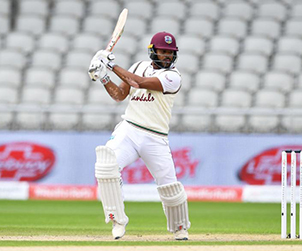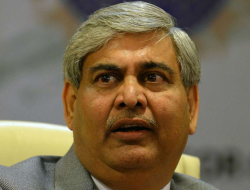A
Test Championship playoff along with ODI and Twenty20 league structures may be adopted by member countries at the next ICC Board meeting in October, after the two-tier Test system was abandoned this week.
Alternate plans to keep afloat bilateral cricket were the main focus for the chief executives of member countries, who met in Dubai earlier this week for a two-day workshop where support for the two-tier model collapsed under BCCI pressure.
According to Haroon Lorgat, CEO of Cricket South Africa and former ICC CEO, all boards are trying to develop context for international cricket, with the best solution being a Test Championship. “That was the belief of many bearing in mind that everyone supports the primacy of international cricket,” Lorgat told ESPNcricinfo.
Lorgat said discussions will continue with the next round of ICC meetings when the Chief Executives Committee (CEC) and the Board would formally meet in Cape Town in the second week of October. “What is clear is that a few members do not support the two-tier system, so we will need to find another way to develop a Test champion using the existing rankings table.”
Lorgat also said it was the members, and not the ICC, that had taken responsibility to ensure bilateral cricket was in good health. “Media have got it wrong. Bilateral cricket is not the responsibility of the ICC. They are facilitating a process to assist the member countries to sustain fan interest by developing context.”
During his ICC tenure, Lorgat was a firm supporter of a World Test Championship to create context, and he believes it is needed to ensure that fans’ interest in bilateral cricket is sustained. “The best we might be able to do now is to build a championship model using the existing Test-rankings table to play a final between the top two teams, say every two years. Although not a perfect outcome, it could find support among all members. Doing nothing is not an option.”
A longer cycle, in which all teams played each other over four years, has been deemed too hard to follow. “Overall it is now a pretty compelling model for all countries. There is very strong alignment on the structure and context for the three formats, and the need for change and improvement,” a representative from an influential board said.
For the two-tier model to be implemented, it was necessary that at least seven out of the 10 members back the proposal. Despite six member boards (Australia, England, South Africa, New Zealand, Pakistan and West Indies) being in its favour, the two-tier model was shelved. Although no formal voting process took place, four members – India, Bangladesh, Sri Lanka and Zimbabwe – were against it.
“You need seven to support any change, to make it more sensible,” a CEO who was present at the Dubai workshop, said. “You don’t have India. You don’t have Bangladesh. You don’t have Sri Lanka. That is three strong playing cricket countries. Zimbabwe was fourth. West Indies in principle were supportive of it. So two-tier won’t work.”
But it is difficult to understand why the smaller countries would not support the two-tier structure considering it would allow them guaranteed matches and more exposure. In the end, emotion, history and culture, and the status hit that comes with losing a position in the top tier, rather than logic, were the reasons behind the proposed two-tier concept in Test cricket failing to take off, a CEO said. “Some of the countries who don’t want to end up in the second division, if that is how they see it, they don’t support it. It is very simple: it is because of the stature of not being in the top tier [of seven nations]. It is the fear of being in the second division [bottom five]. That is all it is about.
“Even if you are not guaranteed fixtures in the current system, they are happy to be in one division. So they rather not play cricket than being in a two-tier structure where you will be guaranteed cricket. There is no logic in that. In this compromised version that seems to be finding favour, all the 10 members will be in one division.”
ESPNcricinfo understands Bangladesh and Zimbabwe in particular declined the chance of playing more Test cricket in order to avoid being tarred with second-division status. A representative present in Dubai during the workshop pointed out that not even “a bucket of money” could divert the stance of the smaller countries as they remained against the two-tier model.
According to Lorgat, the boards in favour of the two-tier structure tried to impress the advantage of such a model. “We tried to motivate why a two-tier league would be the best way to sustain and generate fan interest. It did not find favour with some members.”
But Lorgat pointed out all 10 members are working hard to find a road map that would benefit bilateral cricket for every board. “It is not about who supports or who doesn’t. Everybody accepts that bilateral cricket needs attention. Some do not support a two-tier Test Championship that would allow for promotion and relegation and also include Associates members. But if that doesn’t find favour, then we need to find another model that works.”
One possible positive to emerge out of the two-tier fallout, another CEO said, could be the weaker countries could once again partake off the financial gains which would have been channelled mainly to the Big Three. “It is very encouraging to hear the BCCI talking about supporting the smaller members. If a two-tier system affects smaller countries and the BCCI does not want this, then it is a signal that the funding that was channelled to the Big Three at the expense of the smaller countries would also come back.”























